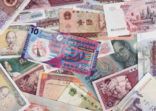A relatively robust and favourable macro outlook for countries in Asia and Latin America bodes well for investment opportunities across emerging markets (EM) for the rest of 2023.
In particular, EM bonds and currencies are appealing, according to Amundi, with equities valuations also attractive on a selective basis.
“Resilience and a growth advantage over developed markets make emerging countries an attractive destination for the second half of the year,” said Monica Defend, head of the Amundi Institute.
More specifically, the European asset manager is forecasting a 4% average growth rate for EM in 2023, in contrast to 1.1% for advanced economies.
Asia’s proven potential
Asia is driving a significant portion of growth within EM overall, despite recent weaknesses observed in China.
“The size of the region’s market, labour prices and government policies aimed at enhancing the business climate…continue to attract foreign investors, bolstering Asian economies’ prospects,” added Defend.
In India, for example, while Amundi believes growth may moderate to 6%, renewed investments in sectors like semiconductors, electric vehicles and renewable energy should provide longer-term momentum.
Investors can also count on China, even though its overextended property sector, weak household consumption, indebted local governments and shaky consumer and business confidence are weighing on the economy. Yet the recent Communist Party meeting signaled broad support for the property sector and boosting consumer spending.
This is expected to have a positive knock-on effect for Asian equities. “Combined with [China’s] higher commodity prices, stronger fiscal positions, continuing easy monetary policy and a weaker US dollar, we continue to see significant upside for the broader Asian economies over the medium term,” added Marty Dropkin, head of equities, Asia Pacific at Fidelity International.
The China +1 strategy is a key dynamic, he explained, as developed-market companies spread out production to other countries with low-wage, high-skilled economies. “This trend is also driving greater dispersion in returns among emerging economies,” he said, highlighting India, Indonesia and Vietnam as beneficiaries.
EM policy supportive
In other parts of EM, such as Latin America and eastern Europe, while the growth picture is more diverse, Defend at Amundi believes many countries are already far ahead in terms of monetary policy normalisation.
“Local central banks responded quickly and aggressively to impending inflation at the end of Covid-era restrictions, creating the scope for attractive carry trades and paving the way for the best bond market performance in the year to date,” she said.
In view of decelerating prices, local policymakers should be preparing to lower rates in the second half of 2023, she added, pointing to Chile’s example in July as likely to be the first of several cuts.
Boosting allocations to EM assets
Prospects of rate cuts, which have helped to narrow the gap between developed and emerging government borrowing costs to the lowest level since 2007, should provide impetus for EM local currency bonds.
The spread pick-up in EM relative to developed markets remains appealing, supporting many local currency yields, according to Grant Webster, co-head of EM sovereign & FX at Ninety One.
“Given yields have historically been a reliable indicator of forward-looking returns, current valuations support the case for EM debt, particularly in light of the stronger EM fundamentals currently witnessed,” he said.
In terms of currencies, commodity exporting countries and high-carry currencies like those in Latin America are also appealing. “The oncoming bout of monetary easing will be focused on removing emergency-era interest rate hikes and synchronising policy with growth and inflation prospects, so carry should remain high,” said Defend.
She also sees cheaper valuations as favouring EM equities, with regional differences. “Countries that are more advanced in their monetary policy cycle may experience a faster rotation into equities.”

















